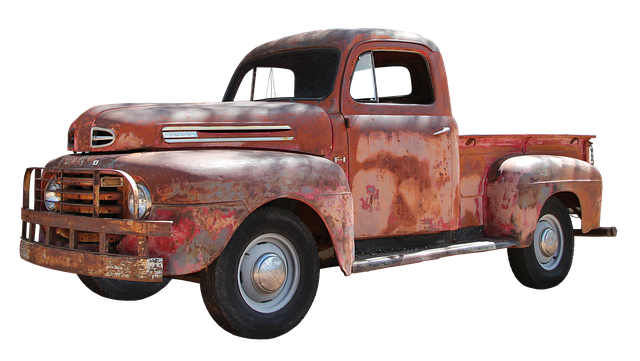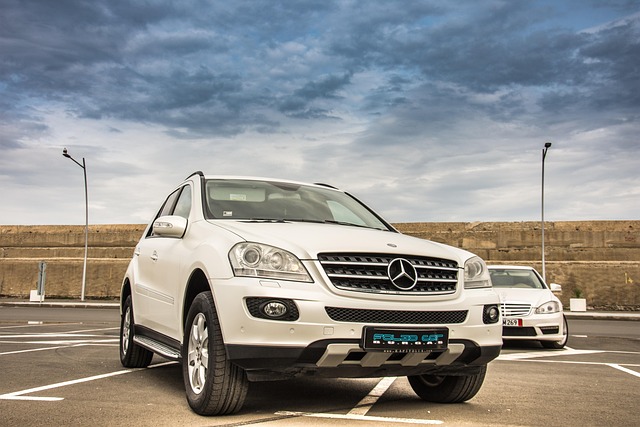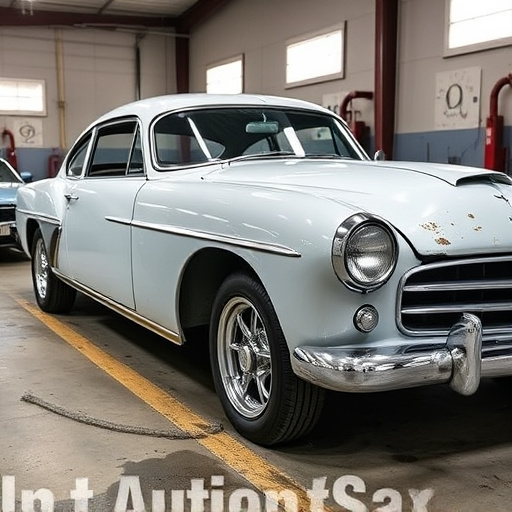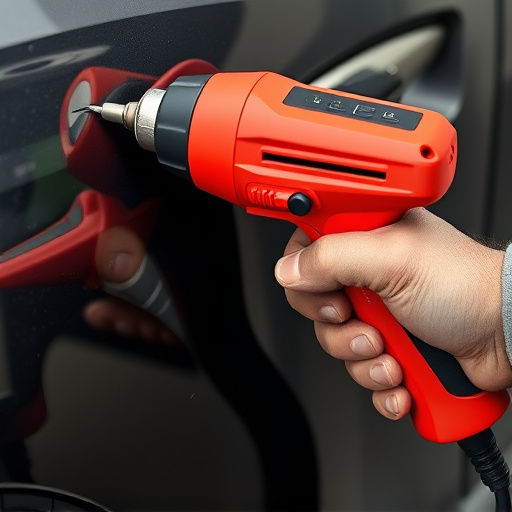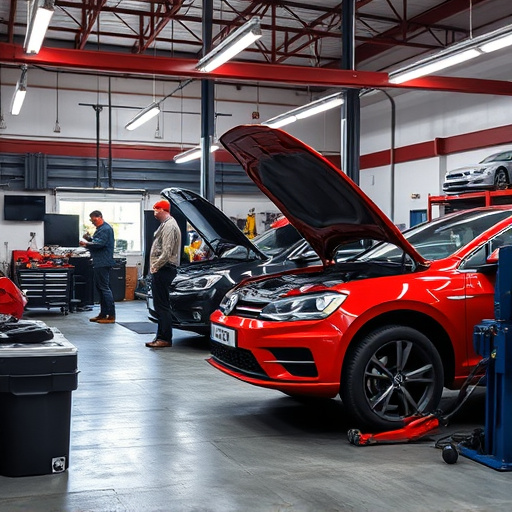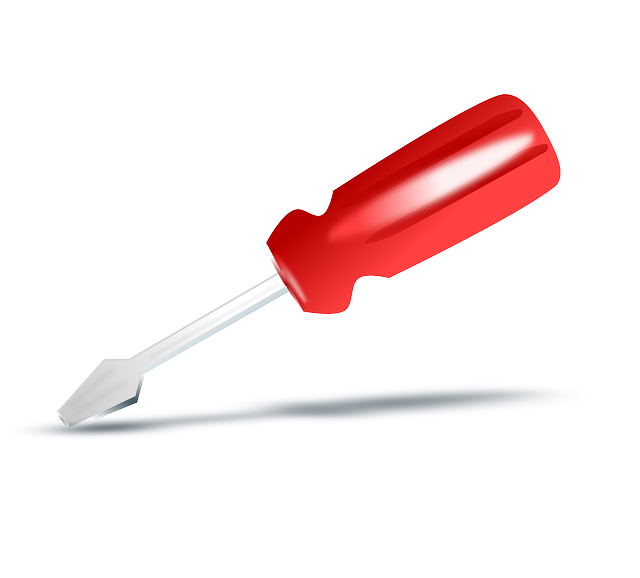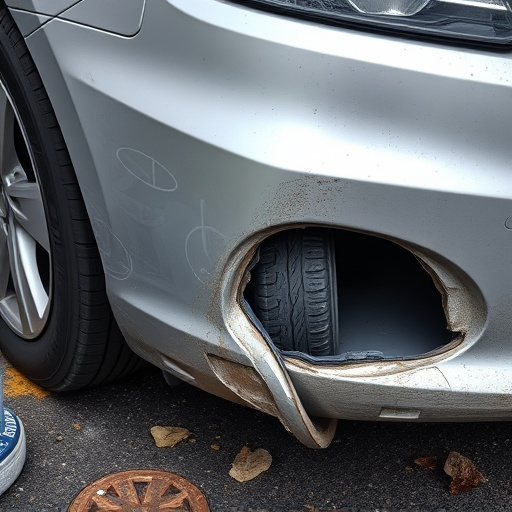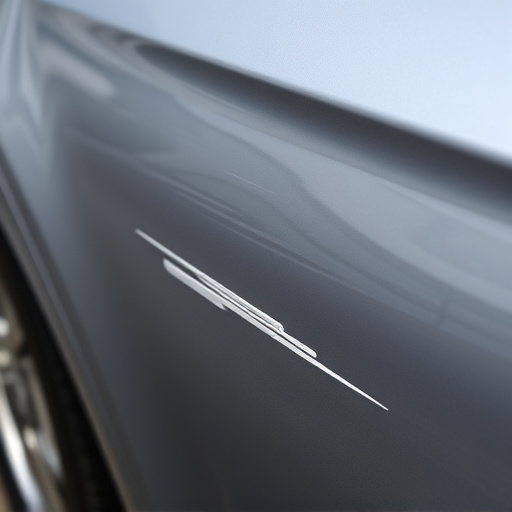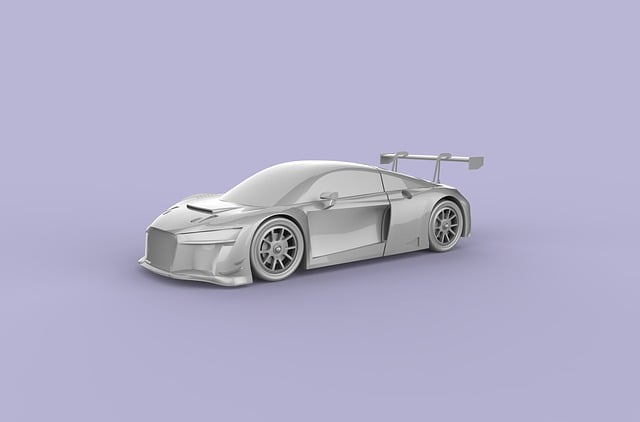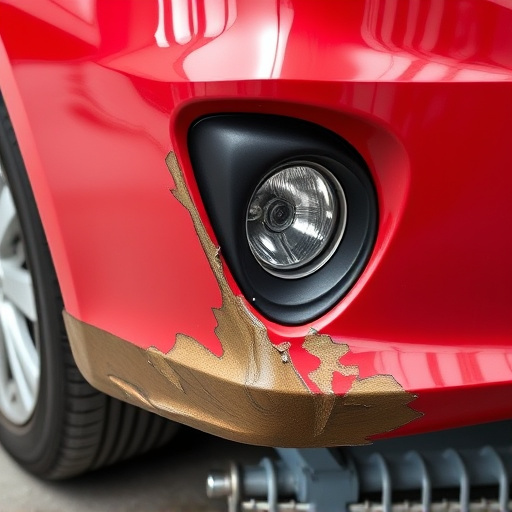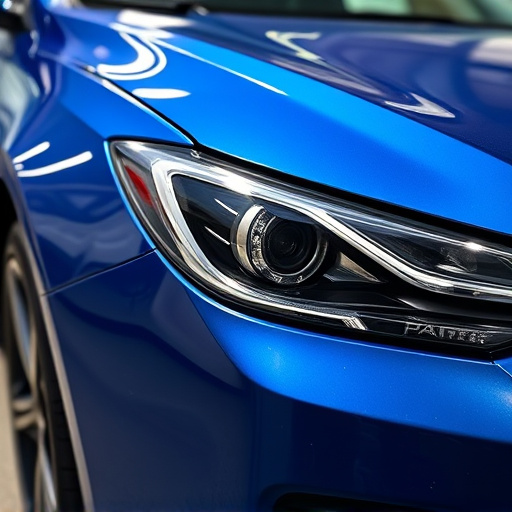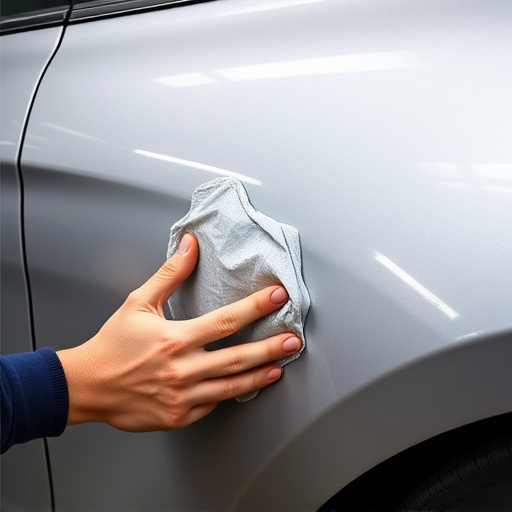Tri-coat paint systems, consisting of base, mid (primer), and clear coats, offer modern cars enhanced durability and aesthetics. Repairing these intricate finishes presents unique challenges, requiring technicians to expertly match color, texture, and gloss for seamless integration. Skilled professionals use advanced tools like spectral analysis and digital software for precise color matching, preserving the vehicle's original appearance and increasing resale value. The systematic repair process involves thorough preparation, HSV analysis for exact matches, and controlled application of thin layers, ensuring a smooth finish even in complex collision scenarios.
“In the realm of automotive restoration, tri-coat paint repair services stand out for their intricate nature. This article guides you through the art of matching colors in these complex systems. We delve into the unique challenges posed by tri-coat paints and explore the science behind precise color matching. Learn effective techniques and utilize specialized tools to achieve perfect blends, ensuring your repair work is indistinguishable from the original finish. By mastering this skill, you empower yourself to deliver top-tier tri-coat paint repairs.”
- Understanding Tri-Coat Paint Systems and Their Unique Challenges
- The Science Behind Color Matching: Techniques and Tools
- Step-by-Step Guide to Achieving Perfect Color Matches in Repair Services
Understanding Tri-Coat Paint Systems and Their Unique Challenges
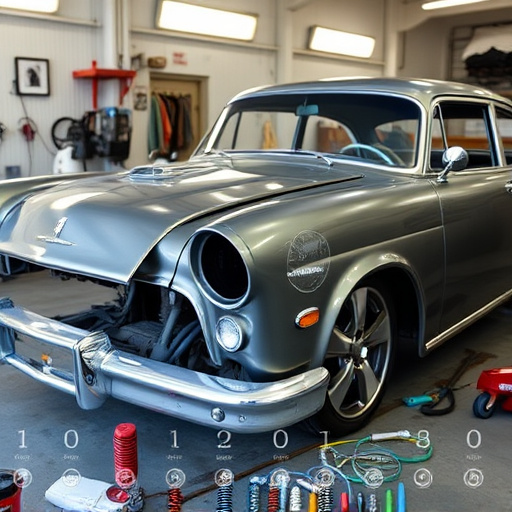
Tri-coat paint systems are a common feature in modern car manufacturing, offering a durable and aesthetically pleasing finish to vehicle surfaces. These systems consist of three distinct layers—the base coat, mid-coat, and clear coat—each playing a vital role in protection and color retention. However, tri-coat paint repair presents unique challenges compared to traditional single- or two-coat finishes. The intricate nature of these systems demands precision and expertise during the repair process.
When addressing damages such as scratches, dents, or minor crashes in car bodywork (including bumper repair), technicians must carefully match not only the color but also the texture and gloss of each coat. This is particularly crucial in tire services or any area where the paint has been compromised, as misalignment can result in unsightly differences that detract from the vehicle’s overall appearance. Skilled professionals use specialized tools and techniques to ensure a seamless blend, ultimately preserving the car’s original aesthetic and enhancing its resale value.
The Science Behind Color Matching: Techniques and Tools
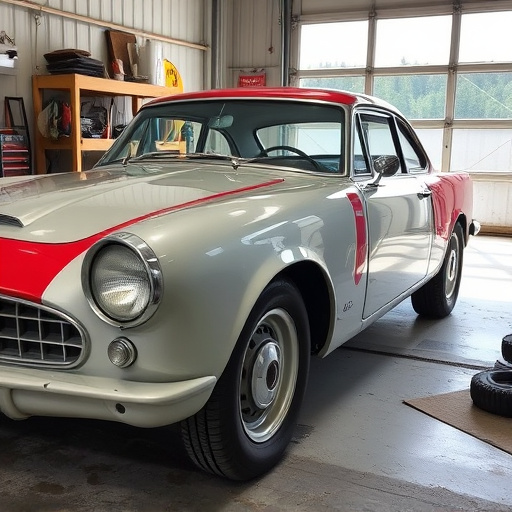
The Science Behind Color Matching: Techniques and Tools
Color matching in tri-coat paint repair services is an art and a science. It involves understanding the intricate layers of paint that make up a vehicle’s exterior, specifically the base coat, middle coat (or primer), and top coat. Each layer plays a crucial role in protecting the car body repair and achieving a flawless finish. Professionals use advanced techniques and tools to ensure precise color matching, going beyond mere visual inspection.
One common technique is spectral analysis, which employs specialized instruments to break down light reflected from the paint surface into its component colors. This method allows technicians to identify the exact hue, shade, and saturation of the damaged area compared to the surrounding unharmed paint. Additionally, digital color matching software facilitates the process by calculating and comparing color codes, ensuring minimal deviation between the new and original paint. Such tools are invaluable in car body repair and dent removal processes, aiming for a seamless blend that’s virtually indistinguishable from the rest of the vehicle, even when inspecting closely.
Step-by-Step Guide to Achieving Perfect Color Matches in Repair Services
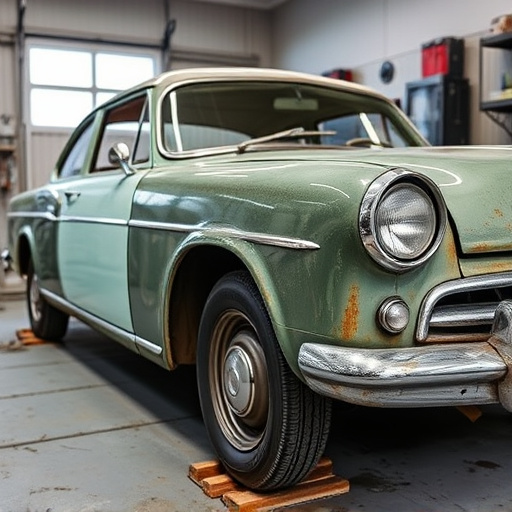
Achieving perfect color matches in tri-coat paint repair services is an art that requires precision and a systematic approach. Here’s a step-by-step guide to help auto bodywork experts master this skill, ensuring superior results in collision repair processes.
First, prepare the damaged area thoroughly by sanding and cleaning it to remove any debris or existing paint impurities. This foundation step is crucial as it allows for better adhesion of new paint. Next, use a putty knife or similar tool to apply a thin layer of primer, which acts as a base for the color coat. Ensure even distribution across the repaired area. Once dry, carefully select the matching tri-coat paint shade using a color chart or digital tools, considering factors like hue, saturation, and value (HSV). Apply the paint in thin, controlled layers, allowing each layer to dry completely before adding the next. This meticulous process ensures a smooth finish and accurate color match, especially in complex auto collision repair scenarios.
Tri-coat paint repair requires a meticulous approach to color matching, understanding the intricate layers, and utilizing advanced techniques. By grasping the science behind color matching and following a structured guide, professionals can deliver exceptional results, ensuring repairs that seamlessly blend with the vehicle’s original finish. This skill set is invaluable in the industry, enabling technicians to provide top-tier tri-coat paint repair services.

